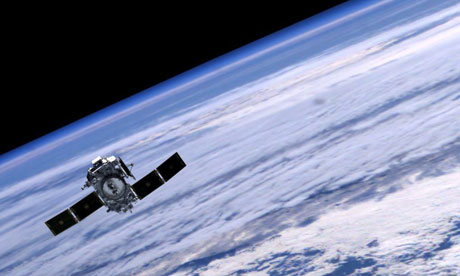 The threat of solar storms that could wreak havoc on the world's electronic systems must be taken more seriously, the UK government's chief scientist has warned. A severe solar storm could damage satellites and power grids around the world, he said, leading to a "global Katrina" costing the world's economies as much as $2tn (£1.2tn).
The threat of solar storms that could wreak havoc on the world's electronic systems must be taken more seriously, the UK government's chief scientist has warned. A severe solar storm could damage satellites and power grids around the world, he said, leading to a "global Katrina" costing the world's economies as much as $2tn (£1.2tn).
"This issue of space weather has got to be taken seriously," said John Beddington, the UK government's chief scientific adviser, speaking at the annual meeting of the American Association for the Advancement of Science (AAAS) in Washington DC.
"We've had a relatively quiet [period] in space weather and we can expect that quiet period to end. Over the same time, over that period, the potential vulnerability of our systems has increased dramatically. Whether it's the smart grid in our electricity systems or the ubiquitous use of GPS in just about everything these days."
"It's reasonable to expect there will be more [solar storm] events," said Jane Lubchenco, administrator of the US National Oceanic and Atmospheric Administration. "The watchwords are predict and prepare."
The sun's activity goes up and down on a roughly 11-year cycle, and the next period of maximum activity is expected in 2013.
A solar storm starts with a solar flare that is accompanied by a burst of electromagnetic radiation that, when it arrives at Earth, ionises the outer atmosphere. On the ground, we would be safe but GPS satellites and others would be affected.





 Several professors at universities around the US are facing disciplinary actions in regard to their support...
Several professors at universities around the US are facing disciplinary actions in regard to their support... Israel launched a wave of airstrikes against Houthi targets in Yemen on Sunday while continuing to...
Israel launched a wave of airstrikes against Houthi targets in Yemen on Sunday while continuing to... Less than two weeks before the presidential election, a former model has gone public with accusations...
Less than two weeks before the presidential election, a former model has gone public with accusations...






























